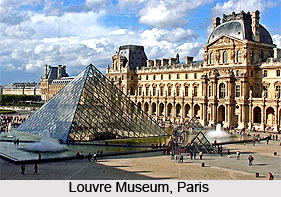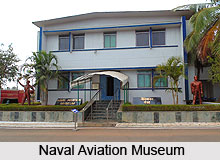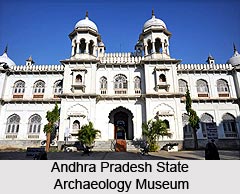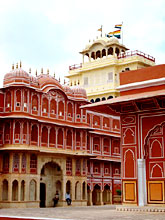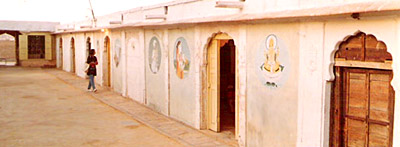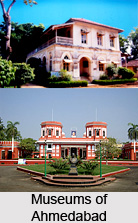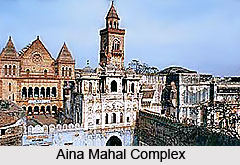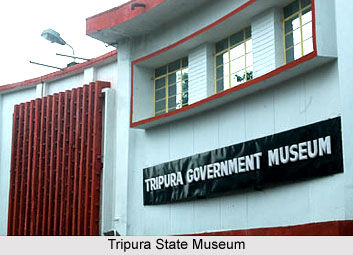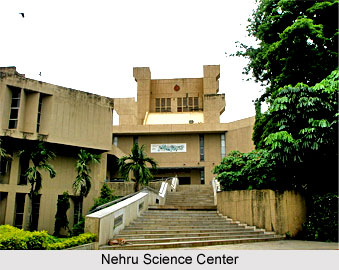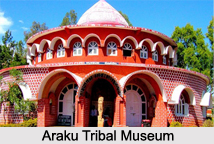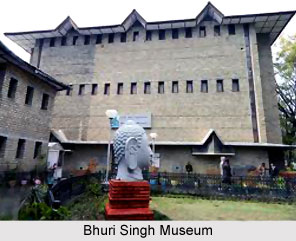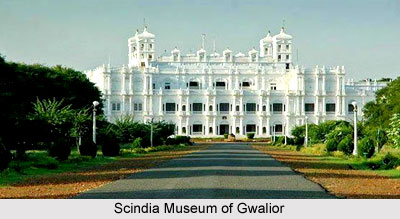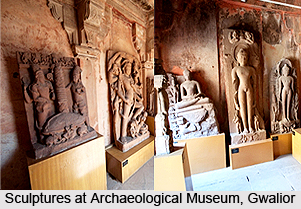 Established in the year 1984, the Archaeological Museum is located in Gwalior in Madhya Pradesh. More specifically, this museum is located in front of Hathi Pole Gate of Gwalior Fort. This museum was constructed in a hospital and jail building belonging to the British period.
Established in the year 1984, the Archaeological Museum is located in Gwalior in Madhya Pradesh. More specifically, this museum is located in front of Hathi Pole Gate of Gwalior Fort. This museum was constructed in a hospital and jail building belonging to the British period.
Architectural Design of the Archaeological Museum
The Archaeological Museum is designed in a way to include a large hall which is rectangular in shape. There is also a chamber connected to it. Also, the front and rear side of the museum is provided with verandahs with different types of exhibits.
Sculptures in the Archaeological Museum
The entire gamut of sculptures in the Archaeological Museum is well preserved by museum authorities. It has a large and varied collection of antiquities. These sculptures are garnered from Gwalior and its adjoining areas. Prominent places among them are Amrol in Gwalior district, Naresar, Bateswar, Padawali, Mitawali and Sihonia in Morena district, Kherat and Ater in Bhind district, Terahi, Ranod and Surwaya in Shivpuri district. Sculptures in this museum belong to different sects. Accordingly, these sculptures have been classified into different groups, namely, the Shaiva, the Vaishnava and the Jaina. There is also a miscellaneous group in the museum. What is evident from the sculptures is the development of sculptural art and style in India from 1st century BC to 17th century A.D., to which they belong.
The earliest collection of the museum comprises of the sculptures garnered from Mitawali. These are characteristically, monumental figures. History highlights that they belong to the Sunga and Kushana periods. Balarama, Kartikeya and Lakulisa are some of the sculptures of these periods. Heavy garments and ornaments are beautified by the designs of these sculptures on them.
Sculptures collected from Nareshwar, Bateswar, Kherat, Ater, Rannod, Surwaya and Padawali belong to the Pratihara period, which is known to exist from the 8th century A.D. to 10th century AD. Rich art traditions and plasticity of the Gupta period continues to exist in the images of this period. Characteristically, these figures are identified as slim, slender, graceful and divine. Nataraj, Ekmukha Sivalinga, Maha Pasupatinath Siva, Saptamatrika, Adinath and Parsvanath are some of the sculptures of this period, attracting visitors to the museum.
Sculptures from Suhania represent the unique art tradition of the Gupta period. History highlights that they belong to 11th century AD. Characteristically, these figures are defined as natural, dynamic and graceful. Asthadikpalas, Surasundaris, dancers, Vidhyadharas and Mithuna figures are some of the sculptures belonging to this period.
Sculptures collected from Ater, represent a synthesis of Hindu and Mughal art, patronized by the local Bhadoria kings of 17th century AD.
Related Article:
Museums of Madhya Pradesh
Indian State Museums
Indian Archaeological Museums
Archaeological Museum, Kamalapur
Archaeological Museum, Delhi
Archaeological Museum, Cochin, Kerala
Archaeological Museum, New Delhi
Archaeological Museum, Ropar, Punjab
Archaeological Museum, Badami, Karnataka
Archaeological Museum, Hoshiarpur, Punjab
Archaeological Museum at Bodhgaya, Bihar
